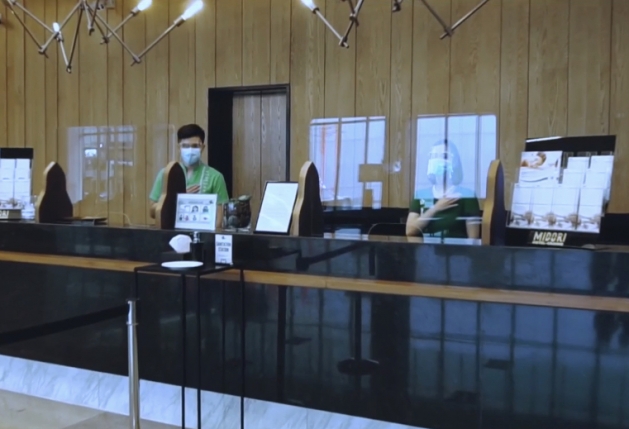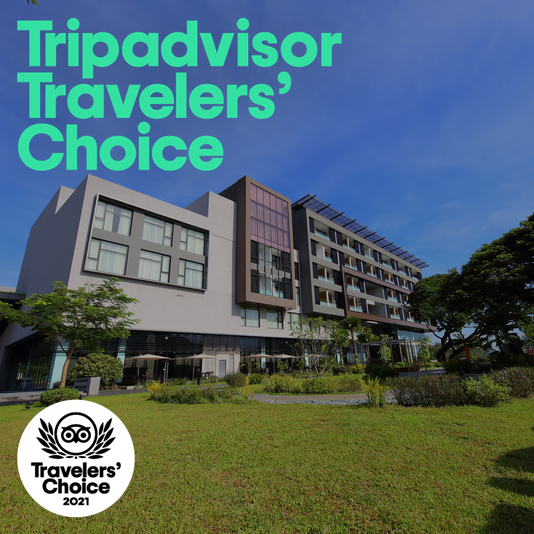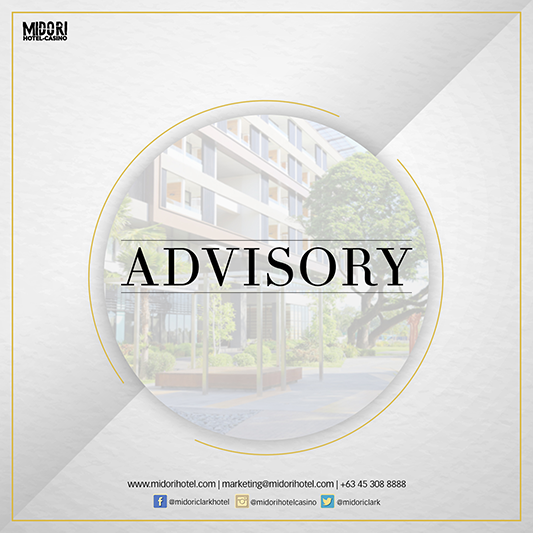INFORMATION
Business establishments offering temporary homes to guests will have to double their effort in keeping their spaces safe and free from the coronavirus disease (COVID-19) as the Department of Tourism (DOT) finally laid out its health and safety guidelines for the operations of accommodation establishments under the “new normal.”
Accommodation establishments refer to hotels, resorts, apartment hotels, tourist inns, motels, pension houses, private homes used for homestay, ecolodges, serviced apartments, condotels, and bed and breakfast facilities, and others operating primarily for accommodation purposes.
In Memorandum Circular 2020-002 dated May 22, the DOT, as mandated under Republic Act No.11469 known as the Bayanihan To Heal as One Act, has provided guidelines to institutionalize updated health and safety protocols under a new normal scenario.
These guidelines address guest handling, housekeeping, food and beverage service, kitchen sanitation and disinfection, public areas, hotel transport service, engineering and maintenance services, business practices and management, supplies of goods and services, and the management of symptomatic guests.
The DOT said the guidelines apply to all accommodation establishments in the Philippines in areas where a community quarantine is no longer in place.
Guest arrival
To ensure the safety of both accommodation personnel and other hotel occupants, qualified health or medical staff or trained hotel personnel will take the body temperature of guests with a thermal scanner before entry.
“Only guests cleared during screening shall be allowed to enter the hotel perimeter to check-in. Those with fever and flu-like symptoms will not be allowed to enter the establishment and will be referred to the doctor on duty, to the nearest hospital, or to the Barangay Health Emergency Response Team (BHERT) in accordance with the DOH prescribed protocol,” the guidelines state.
Guests must also complete a health declaration form about their health status and travel history.
Accommodation establishments must also provide their guests with information materials on COVID-19: how to reduce the risk of contraction, proper sanitation and disinfection measures, and emergency numbers.
DOT said reminder cards must also be provided, which may include the following points:
*No sharing of food or any personal or non-personal belongings;
*Proper disposal of used personal protective equipment (PPE);
*Mingling with occupants of other rooms is not encouraged;
*Practice of proper hand-washing etiquette/hand hygiene, respiratory etiquette, and proper use of face masks.
Safety design
The new DOT guidelines also require the placement of floor markers that allow one meter distance between guests on queuing to ensure physical distancing. The front desk of accommodation establishments must also have an acrylic glass barrier for additional protection.
“Official up-to-date information must be available at the reception desk about travel to and from countries and/or other areas, including local destinations, that are identified by the Department of Health (DOH) as high-risk in spreading the virus or disease,” the guidelines state.
Sanitation materials such as disinfectant or wipes for surface cleaning must also be available at the reception desk.
While the handshake is the common way of paying courtesy, the guidelines encourage the practice of contactless forms of the “mabuhay gesture” to welcome and receive guests.
All staff extending guest assistance that requires physical contact, such as wheelchair and bell service, are also required to use PPE.
Unlike during the pre-COVID-19 phase, there will be no showing of guests around the room after check-in.
Room occupancy and decontamination
Adjusting to the new normal setting, only single up to double room occupancy is allowed for now.
“Couples or family members who share the same household may be allowed in double or twin occupancy rooms. A distance of one to two meters between the beds is highly encouraged,” the guidelines said.
Rooms must also be set up in a way that would allow convenient in-room dining for guests while room turndown service is highly discouraged.
Prior to accepting new guests, the management must also ensure that rooms are cleaned and properly disinfected after the check-out of the last guest.
“Rooms must remain empty for a certain period, depending on the disinfecting technology or materials being used,” it added, encouraging the use of electrostatic sprayers with hospital-grade disinfectants, high efficiency particulate air (HEPA) filter, or germicidal ultra-violet (UV) lighting system, at least once every two weeks.
Special treats and dining services
The new DOT guidelines highly discourage minibars and other complimentary in-room food and beverage, except bottled water.
Guests are also discouraged from moving from their places when dining as all food and beverages are now required to be served by restaurant crew or personnel.
The guidelines are also highly discourage buffet services and room service, while the serving of individually-packed meals using biodegradable packaging is encouraged.
“In lieu of room service, grab-and-go stations (where guests can pick-up their breakfast or ordered food) must be made available. Grab-and-go stations must be sanitized regularly every after use,” it said.
In terms of banquet tables, the number of guests will now be decreased by half.
“Banquet tables that can accommodate ten guests must accommodate only five guests. Tables shall be arranged such that the distance from the back of one chair to the back of another chair shall be more than one meter apart and the guests face each other from a distance of at least one meter,” it added.
Common areas and recreational spaces
Since COVID-19 can be acquired through surface droplets, accommodation establishments are also mandated to strictly implement physical distancing measures even in public areas.
When using elevators, only 50 percent of the maximum capacity is recommended to avoid physical contact. Placing of floor markers to delineate physical distancing is likewise encouraged.
“All general facilities and all furnishings must be cleaned, disinfected, and wiped at least once daily,” it said.
As for recreational areas or facilities such as gyms and wellness centers, children’s areas, sports facilities, and swimming pools, the guidelines allow for their operation, but with strict observance of the health department’s prescribed minimum public health standards or non-pharmaceutical interventions that do not involve vaccines, medications, and the like.
Hotel transport service
As in public spaces, the standard passenger capacity of each type of vehicle will be reduced by 50 percent or one seat apart in compliance with the social distancing and passenger limit guidelines set by the transportation department to avoid possible contact.
For each type of vehicle, the guidelines are as follows:
*Car or Sedan – No passenger seated beside the driver. Two passengers at the back row with one seat apart. No more than three passengers, including the driver.
*Vans – Only two passengers per row are allowed. A waterproof transparent barrier between the driver and the passengers must be installed.
*Buses and coasters – A waterproof transparent barrier between the driver and the passengers must be installed. Passengers are not allowed to stand while the vehicle is moving. The drivers are required to use proper PPE for protection.
Hotel service amenities must also include basic first-aid and sanitation kits, such as sanitizers, face masks, and tissue paper, among others.
Accommodation establishment owners are also required to provide holding areas for symptomatic guests with travel history from identified countries with high cases of COVID-19 prior to properly managing the situation, preceded by the prescribed guidelines under the memorandum.
Moreover, the guidelines also suggest the development of a preparedness action plan by the establishment management to effectively manage cases and mitigate impact among clients and staff.
This includes occupational safety and health program, disaster risk and management plan, food safety program, and business continuity plan.







